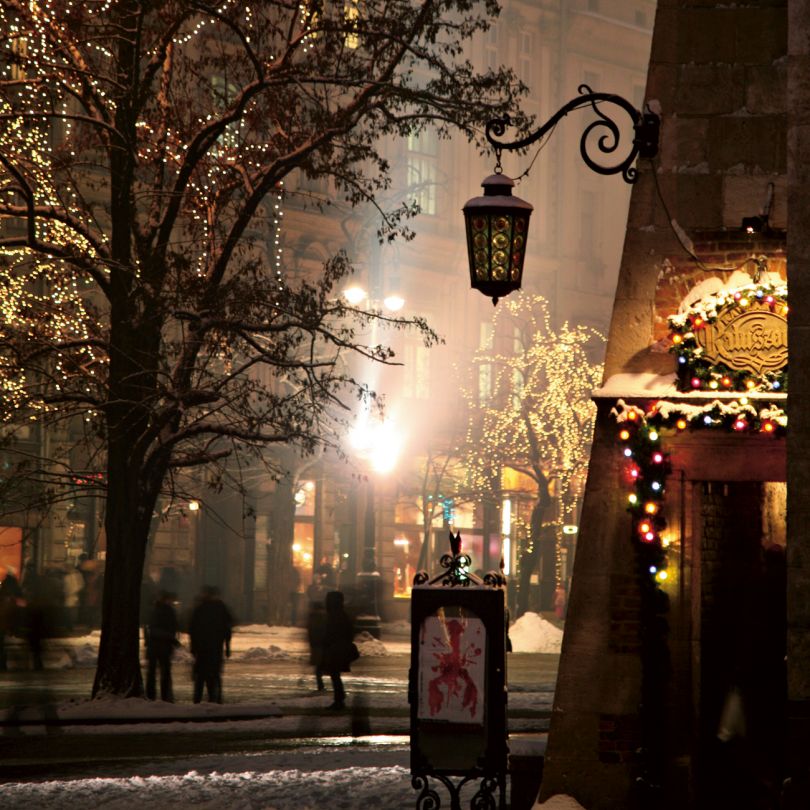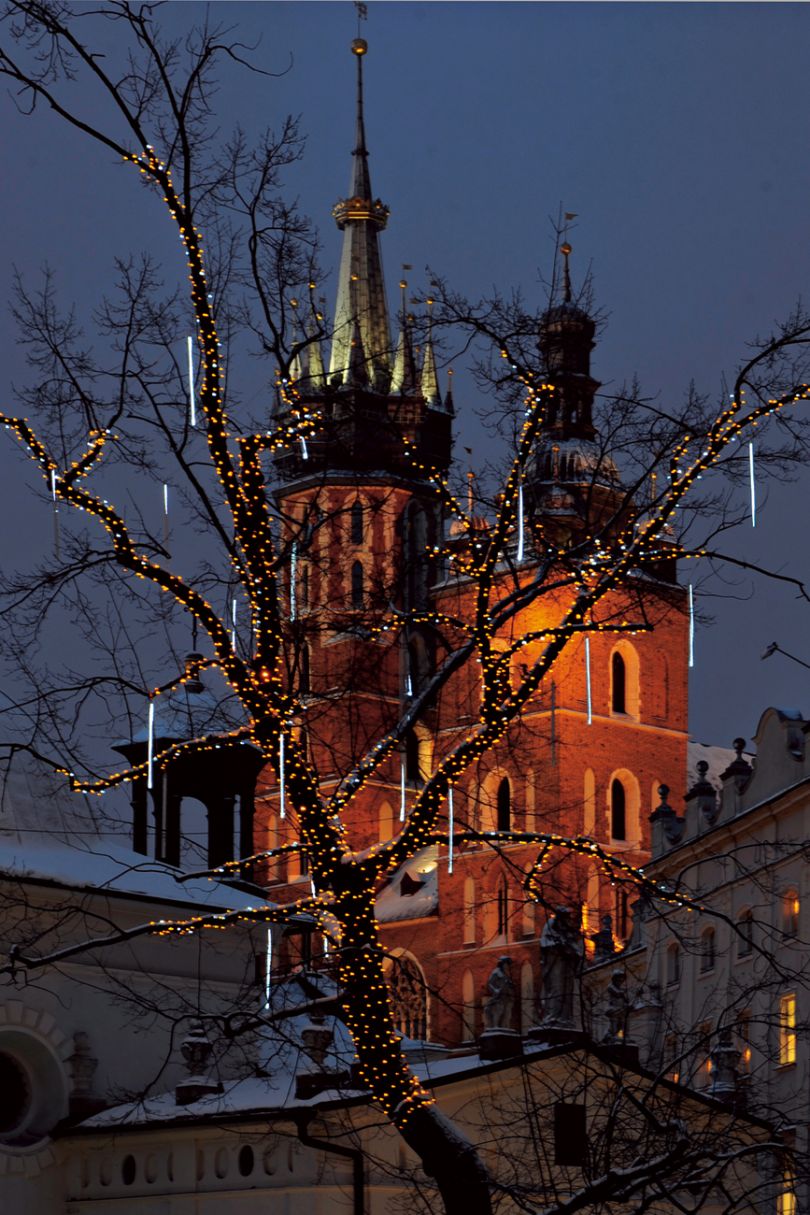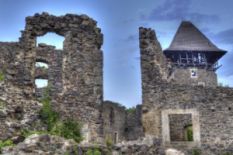The concentration of festive mood is in the heart of Krakow, the Market Square, which happens to be the largest of its kind in medieval Europe (4,000 sq.m.). The square features one of the symbols of the city, St. Mary's Basilica. Every hour of the day a famous bugle call, the hejnał, is played from its tower. The trumpeter plays precisely on the hour or, according to the ancient tradition, blares the warning signal to alert the city to a fire or an imminent enemy attack. Wait until the trumpeter begins to play and wave to him. If you are lucky, the trumpeter will wave back, which is considered to be a good sign and a life-long blessing. And be sure to visit the cathedral to admire Gothic stained glass windows and its unique medieval altar.
You can spot bronze signs on the pavement of the main square and the streets nearby. They mark the Royal Route. It starts from the Florian Gate, runs through the Market Square and Grodzka Street and finally brings us to the Royal Wawel Castle. Now that we know the direction, let us return to the Market Square and come closer to the Adam Mickiewicz monument. Since the 19th century Krakow residents have been meeting each year on the first Thursday of December for a competition of fabulous tiny and gigantic hand-made nativity scenes, which are special Christmas exhibitions, miniature reproductions of the architectural jewels of the city and a theater of puppets.

By the way, in late November 2018, Krakow's nativity scene craft was included in the prestigious UNESCO list of intangible cultural heritage. Krakow nativity scenes are on display in the city's Historical Museum (www.mhk.pl). Now that we have pleased our souls, minds and eyes, let's see what the city has for our stomachs.
The monument to Mickiewicz stands in front of Sukiennice, or the Cloth Hall, consisting of old trade rows packed with sweets to the brim. Enjoy a generous cup of mulled wine (famous grzaniec), unusual, Christmas-inspired hot beer with honey, cloves and cardamom, to go with obwarzanki krakowski, bagels consisting of two twisted pieces of dough sprinkled with poppy seeds, sesame seeds or salt. They were first baked in the Middle Ages as a treat for both commoners and kings.
The world is really becoming closer thanks to modern connections, in particular between Ukraine and Poland. So, we are guaranteed an emotional retreat in ancient but young Krakow, the center of student life in Eastern Europe!
Myroslava Makarevych
Photo: provided by polscha.travel, shutterstock (5)












